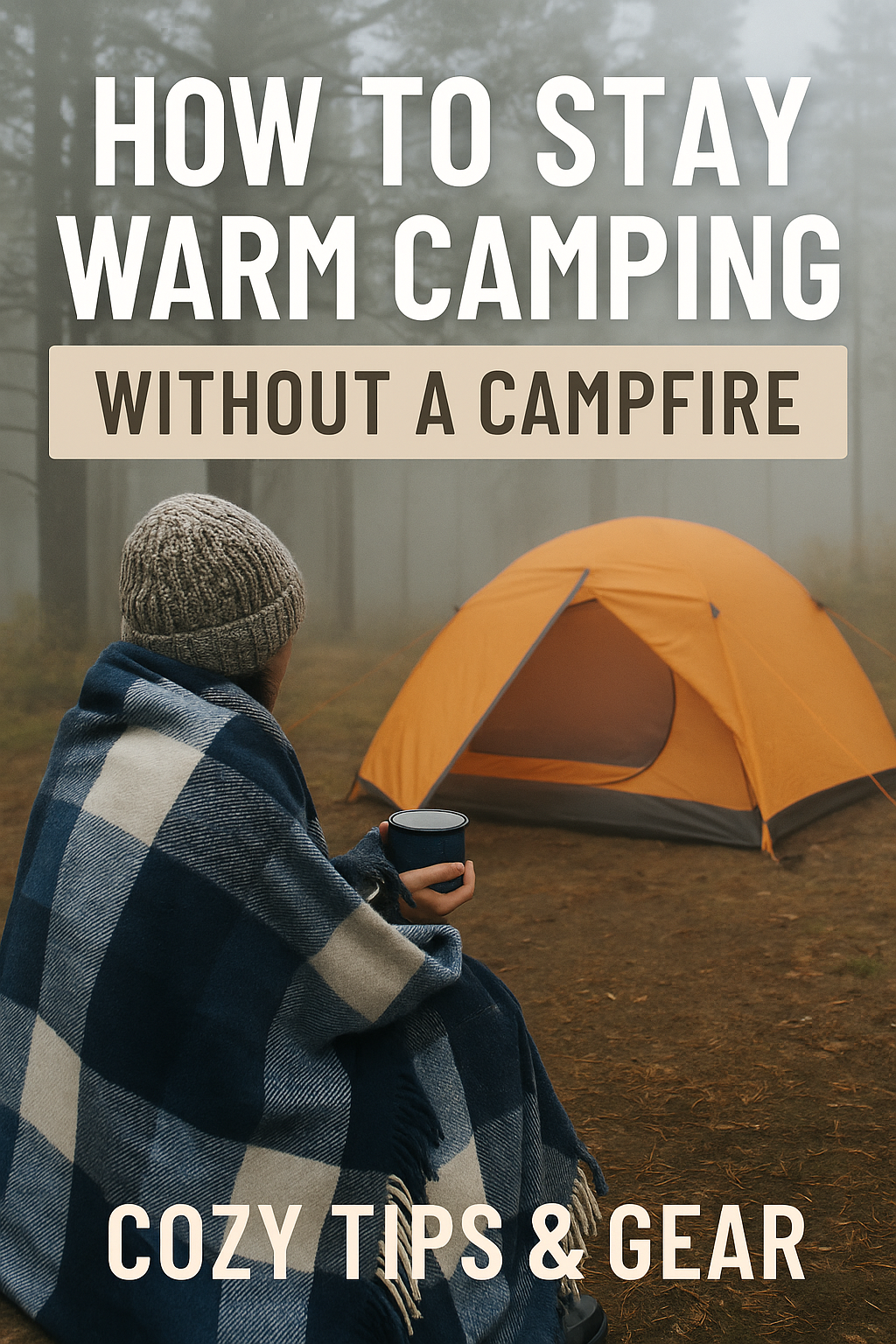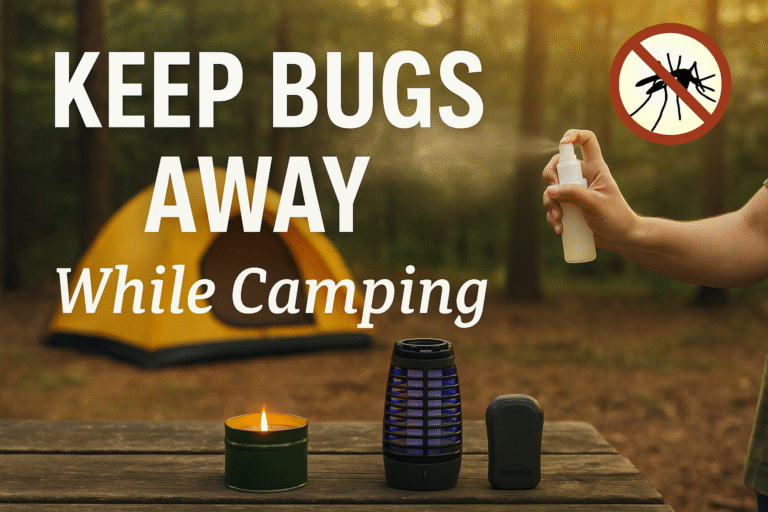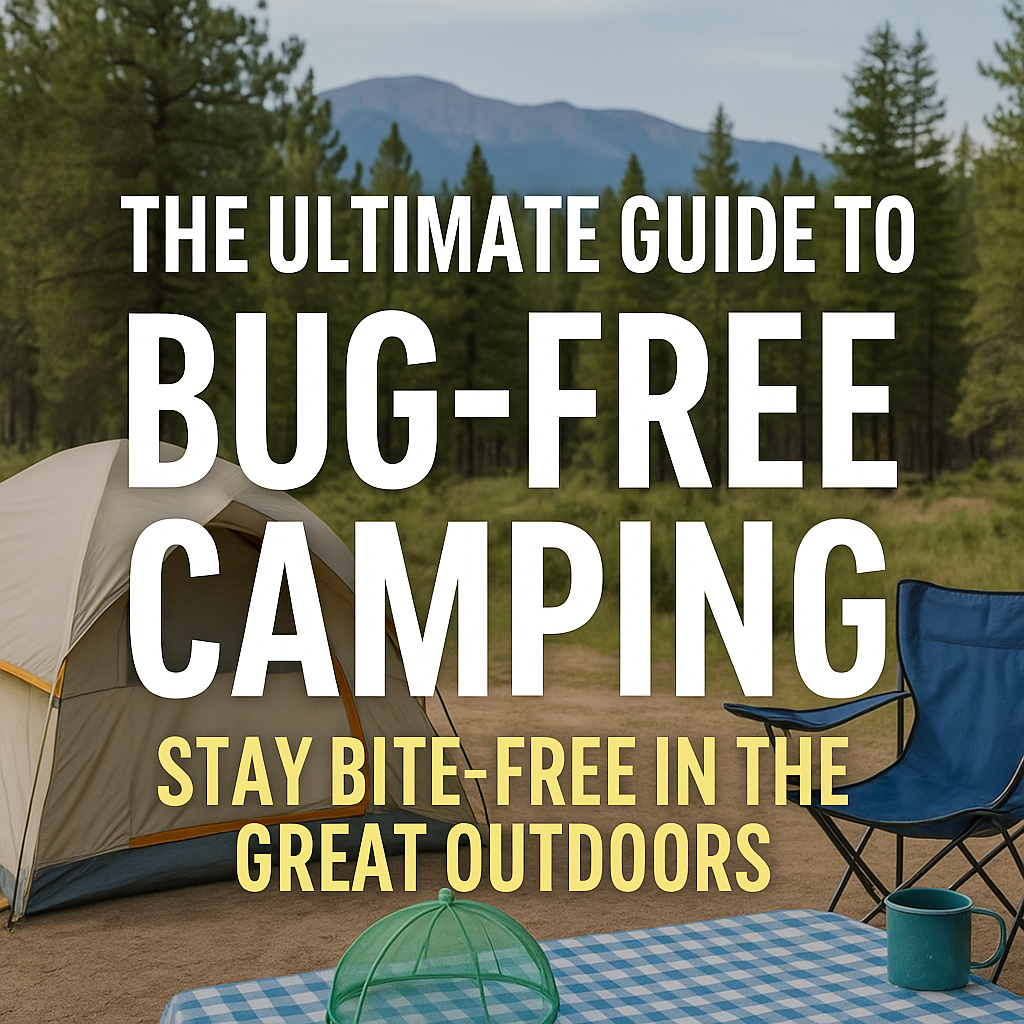Whether you're camping during fire restrictions, avoiding smoke, or simply forgot your firestarter, staying warm without a campfire is totally doable. This guide is packed with real-world tips, beginner-friendly advice, and must-have gear to help you camp comfortably—even when the temperature drops.
- 🔥 Why You Might Need to Camp Without a Fire
- 🧤 9 Easy Ways to Stay Warm Without a Campfire
- 🛠️ Recommended Gear to Keep Warm (No Fire Needed)
- ✅ Quick Checklist: Campfire-Free Warmth Essentials
- 💡 Pro Tip: Avoid These Common Mistakes
- 🙋♀️ FAQ: Staying Warm Without a Campfire
- 🌄 Final Thoughts: Embrace the Chill—Safely
🔥 Why You Might Need to Camp Without a Fire
From burn bans and wildfire risks to eco-conscious choices, there are many reasons you might skip the campfire. But without that central heat source, your nights can get chilly—fast. That’s why preparation and the right gear are essential.

🧤 9 Easy Ways to Stay Warm Without a Campfire
- Insulated Sleeping Pad: Don’t just rely on your sleeping bag. A good sleeping pad adds a crucial barrier between you and the cold ground.
- Layer Your Clothing: Think moisture-wicking base, warm middle, and windproof outer layers.
- Use a Hot Water Bottle: Fill a metal bottle with hot water and place it in your sleeping bag at your feet.
- Choose the Right Tent: Smaller tents retain heat better. Look for 3-season or 4-season tents for added warmth.
- Block Cold Air: Use a tent footprint and add rugs or foam tiles inside for extra insulation.
- Eat a Warm Meal Before Bed: Your body generates more heat digesting carbs and fats—perfect before sleeping.
- Wear a Beanie and Wool Socks to Bed: Heat escapes fastest from your head and feet.
- Snuggle with a Sleeping Bag Liner: A thermal liner can add 10–15°F of warmth.
- Camp Smart: Choose a sheltered location away from wind and near natural cover like trees or bushes.
🛠️ Recommended Gear to Keep Warm (No Fire Needed)
- Therm-a-Rest Z Lite Sol Sleeping Pad – Lightweight, durable, and adds serious insulation under your sleeping bag.
- https://amzn.to/4laRETH – Perfect for hot water bottles in cold sleeping bags.
- Sea to Summit Reactor Sleeping Bag Liner – Adds warmth and keeps your bag cleaner.
- Venture Pal Ultralight Tent – A budget-friendly, compact tent with excellent weather resistance.
✅ Quick Checklist: Campfire-Free Warmth Essentials
- Insulated sleeping pad
- Warm sleeping bag (rated for your climate)
- Thermal liner
- Hot water bottle or heat packs
- Layered clothing (base, mid, outer)
- Wool hat, gloves, socks
- Windbreak tarp or tent vestibule
- Carb-heavy evening snack
💡 Pro Tip: Avoid These Common Mistakes
- Don’t wear wet clothes to bed – Even slightly damp gear will sap your body heat.
- Avoid cotton – It retains moisture and takes forever to dry. Go for synthetics or merino wool.
- Don’t zip up too early – Warm your body before getting in the bag or you’ll trap cold air inside.
🙋♀️ FAQ: Staying Warm Without a Campfire
Can I use a propane heater in my tent?
Yes, but only if it’s a model rated for indoor use with proper ventilation. Look for the Mr. Heater Buddy as a safe option. Always follow safety guidelines and never sleep with it running.
Is it safe to bring hot water bottles in a sleeping bag?
Absolutely! Just make sure your bottle is tightly sealed and not leaking. Use a thick sock or towel to wrap it to avoid burns.
How cold is too cold to camp without a fire?
With proper gear, you can camp in freezing temperatures. For beginners, we recommend staying above 30°F until you gain more experience.
🌄 Final Thoughts: Embrace the Chill—Safely
Camping without a fire doesn’t mean freezing through the night. With the right layers, smart setup, and essential gear, you can stay warm, sleep well, and enjoy the quiet of nature—no smoky campfire required. Try a few of these tips on your next trip and see just how cozy cold-weather camping can be.






